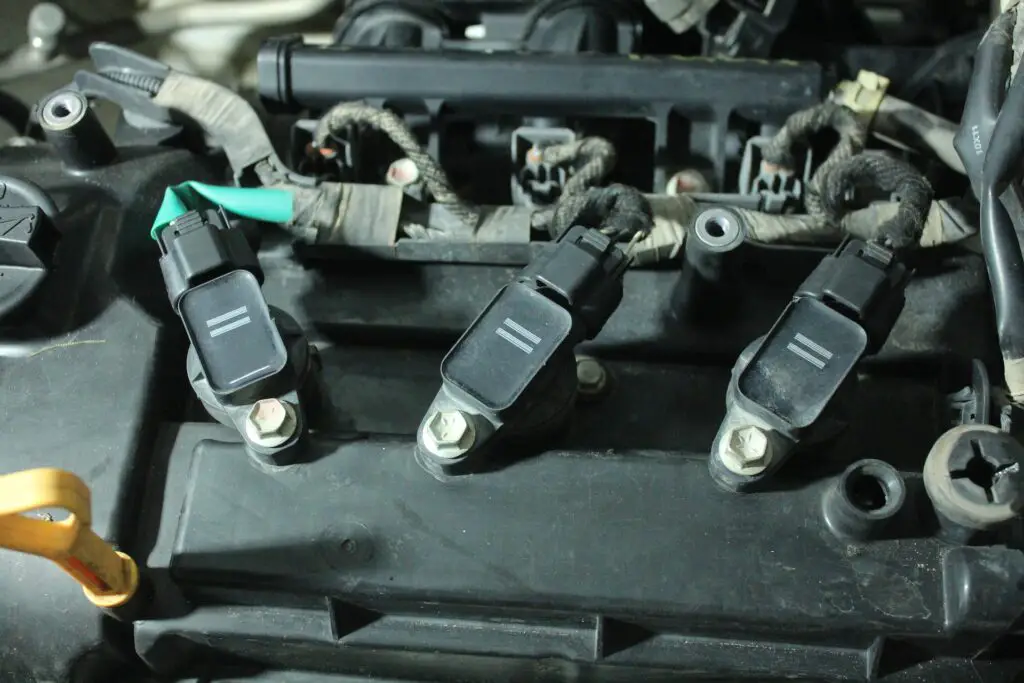When it comes to your car’s engine, the ignition system is one of the unsung heroes that ensures your vehicle starts smoothly and runs efficiently. A key component of this system is the ignition coil. But how many ignition coils does a car typically have?
The answer isn’t as straightforward as you might think and depends on your car’s make, model, and engine type. Let’s dive deep into ignition coils to understand their role, variations, and how to determine what your car uses.
What Is an Ignition Coil?
Before we count how many your car has, it’s essential to understand what an ignition coil does. In simple terms, an ignition coil is a transformer. It converts the low voltage from the car’s battery (around 12 volts) into the high voltage needed to create a spark in the spark plugs—upwards of 20,000 to 40,000 volts.
This spark ignites the air-fuel mixture in the engine’s cylinders, powering your car. Without ignition coils, your car wouldn’t be able to generate the spark needed for combustion, leaving you stranded.
Types of Ignition Coil Configurations
The number of ignition coils in your car largely depends on its ignition system configuration. Here are the main types:
1. Single-Coil System
- How It Works: Older vehicles often use a single ignition coil to generate sparks for all the engine’s cylinders. This coil distributes high voltage to the spark plugs via a distributor.
- Number of Coils: Just one.
- Common in: Classic cars and vehicles manufactured before the mid-1990s.
2. Distributorless Ignition System (DIS)
- How It Works: In this setup, a pair of cylinders shares a single ignition coil. These coils are mounted directly on the engine or very close to the spark plugs.
- Number of Coils: One coil per two cylinders (e.g., a 4-cylinder engine would have 2 coils).
- Common in: Many vehicles from the late 1980s through the early 2000s.
3. Coil-on-Plug (COP) System
- How It Works: Each cylinder has its own dedicated ignition coil, mounted directly on or very close to the spark plug. This design eliminates the need for spark plug wires, improving efficiency and reliability.
- Number of Coils: One per cylinder (e.g., a 4-cylinder engine has 4 coils, a V6 engine has 6, and so on).
- Common in: Most modern vehicles, especially those built after the early 2000s.
4. Coil-Near-Plug System
- How It Works: Similar to COP, but the coils are located near the spark plugs rather than directly on them. Each cylinder still gets its own coil.
- Number of Coils: One per cylinder.
- Common in: High-performance and some luxury vehicles.

Determining How Many Ignition Coils Your Car Has
To figure out how many ignition coils are in your car, follow these steps:
- Consult the Owner’s Manual
- Your car’s manual will specify the type of ignition system it uses and the number of coils.
- Check Under the Hood
- Look at your engine. In a COP system, you’ll see individual coils mounted on each spark plug. For DIS systems, the coils are often grouped together in a module.
- Search Online or Ask a Mechanic
- A quick online search using your car’s make, model, and year can provide the answer. Alternatively, a mechanic can identify your car’s ignition system.
Why Does It Matter?
Knowing how many ignition coils your car has isn’t just trivia; it’s practical knowledge for maintenance and troubleshooting. Here’s why it matters:
- Maintenance Costs: Replacing a single ignition coil is less expensive than replacing multiple. Knowing your system helps you budget for repairs.
- Troubleshooting: Misfires, rough idling, or a check engine light can often be traced to a failing ignition coil. Identifying the faulty coil is easier if you understand your car’s setup.
- Performance Optimization: Ensuring all coils function properly improves fuel efficiency and engine performance.
Final Thoughts
The number of ignition coils in a car can vary from one to as many as eight or more, depending on the engine and ignition system. Most modern cars use a Coil-on-Plug system with one coil per cylinder, making them more efficient and reliable. Whether you’re a gearhead or just a curious car owner, understanding your ignition system can help keep your vehicle running smoothly.
Have questions about ignition coils or other car components? Drop them in the comments below!
Discover more from Chikwem
Subscribe to get the latest posts sent to your email.